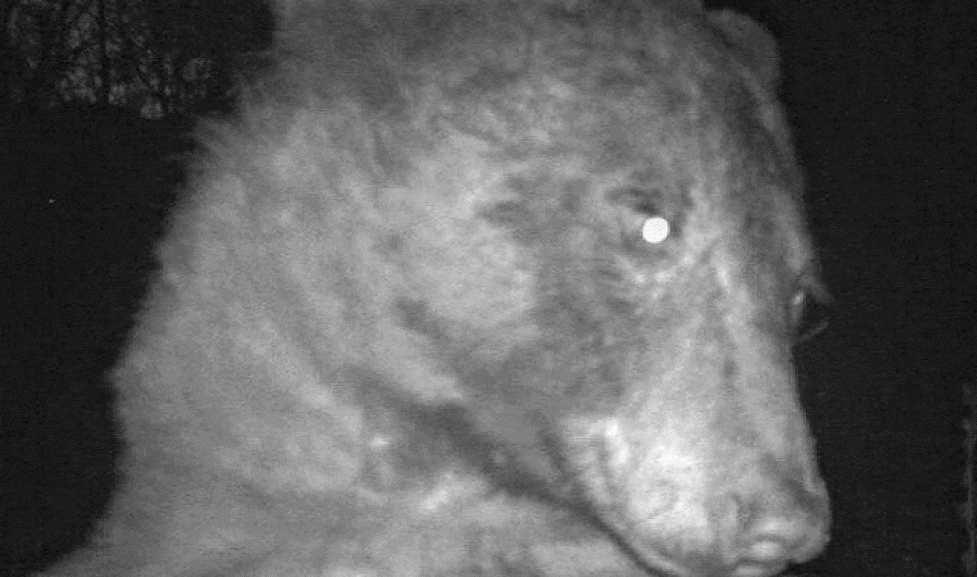This Black Bear Took Hundreds of ‘Selfies’ on a Wildlife Camera
Of the 580 images captured by the camera in November, about 400 were of the bear

A black bear in Boulder, Colorado, decided to “say cheese” for a motion-activated wildlife camera—400 times.
The curious animal took a liking to the device, which had been set up by the City of Boulder Open Space and Mountain Parks department (OSMP) to learn more about the local fauna. Among 580 images captured by the camera in mid-November, about 400 were of the black bear, according to a recent tweet from the department.
Recently, a bear discovered a wildlife camera that we use to monitor wildlife across #Boulder open space. Of the 580 photos captured, about 400 were bear selfies. Read more about we use wildlife cameras to observe sensitive wildlife habitats. https://t.co/1hmLB3MHlU pic.twitter.com/714BELWK6c
— Boulder OSMP (@boulderosmp) January 23, 2023
Known as “selfie bear” after going viral across social media and news outlets, the animal triggered the camera to start snapping photos after stepping in front of it. Most animals tend to walk by wildlife cameras without paying much attention—but not this bear.
“In this instance, a bear took a special interest in one of our wildlife cameras and took the opportunity to capture hundreds of ‘selfies,’” Phillip Yates, a spokesperson for OSMP, says in a statement, per NBC News’ Annie Hill.
Across OSMP’s 46,000 acres of land, nine cameras help the department monitor local species and limit the presence of staff in sensitive areas, according to an August statement. When an animal steps in front of one of the wildlife cameras, the device captures a still photograph. After the initial snapshot, the cameras can start recording video footage for about 10 to 30 seconds.
Alongside black bears, the cameras have also captured deer, ducks, mountain lions, coyotes and other species. To avoid disturbing nocturnal animals, the cameras use infrared light to capture images in the dark. The data gathered by these devices help scientists understand wildlife behavior and make management decisions.
“These cameras play an important role in helping OSMP staff identify important wildlife areas,” Will Keeley, senior wildlife ecologist for OSMP, said in the August statement. “The information we collect from them is used to recommend habitat-protective measures to help protect sensitive natural areas.”
/https://tf-cmsv2-smithsonianmag-media.s3.amazonaws.com/filer_public/fa/4a/fa4af245-54ce-412d-a938-626633627676/bearselfie.jpeg)
The department places the wildlife cameras in regions with notable signs of animal activity, such as footprints, as well as areas where wildlife are likely to travel, like road underpasses.
“Sometimes we put cameras in locations where we think we’ll encounter enigmatic fauna like American beavers or black bears,” Christian Nunes, a wildlife ecologist with OSMP, said in the August statement. “We are fortunate to live in an area with a rich diversity of wildlife species, and these cameras help us to learn what animals are really out there, and what they are up to over the course of a day, a week or even years.”
Black bears are the only bear species to reside in Colorado, but assessing the size of their population is challenging, since black bears are quite “solitary and elusive,” according to a 2015 report from Colorado Parks and Wildlife. The department estimates that about 17,000 to 20,000 black bears live in the state, reports CNN’s Zoe Sottile.
While it’s clear that “selfie bear” can strike a pose and loves a good impromptu photoshoot, not much else is known about the animal. Shannon Aulabaugh, an OSMP spokesperson, tells the Washington Post’s Natalie B. Compton, “We don’t know male or female, as the bear did not take that kind of selfie.”
/https://tf-cmsv2-smithsonianmag-media.s3.amazonaws.com/accounts/headshot/Jacquelyne_Germain_thumbnail_1.png)
/https://tf-cmsv2-smithsonianmag-media.s3.amazonaws.com/accounts/headshot/Jacquelyne_Germain_thumbnail_1.png)